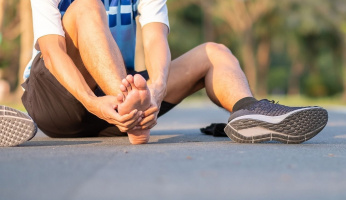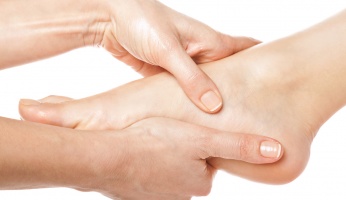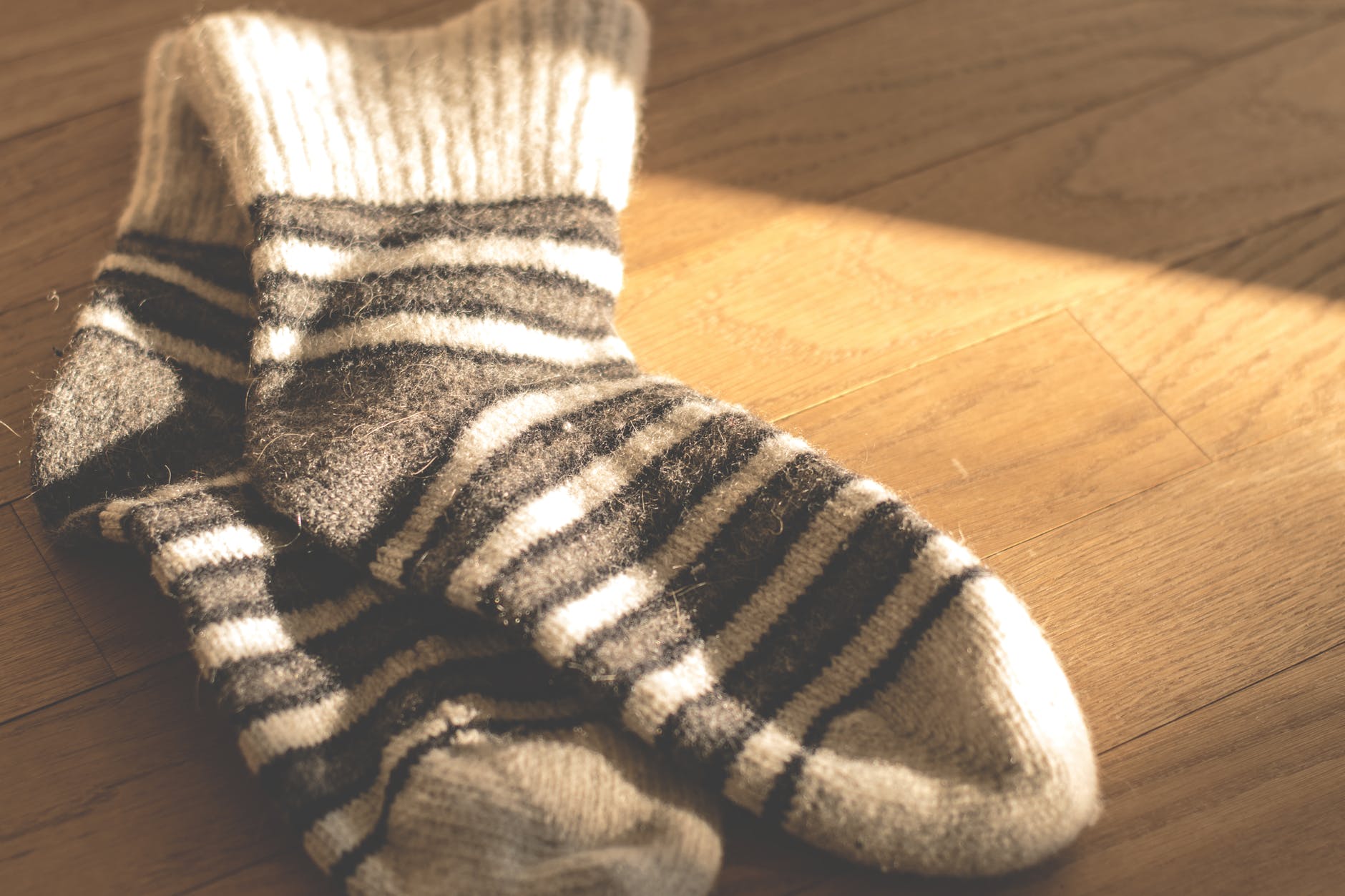Understanding Underpronation and How It Affects Running
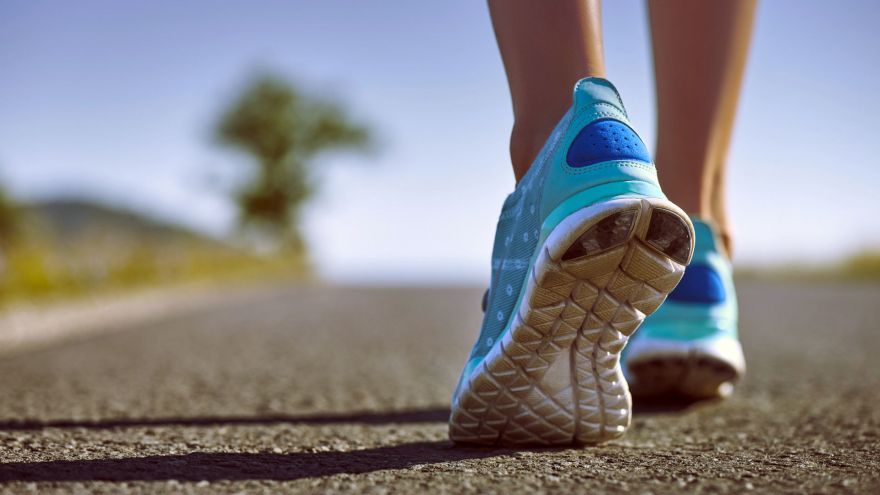 Understanding Underpronation and How It Affects Running www.walkjogrun.net
Understanding Underpronation and How It Affects Running www.walkjogrun.net I found this neat way to find out if you have underpronation. It is quite simple. Take a brown paper bag and wet your feet. Then step on the bag with your wet feet. If you have little to no arch print on the paper bag you may have underpronated feet. If you see half of your arch, your pronation may be normal. Wasn’t that simple?
What is the difference?
When we walk our heel strikes the ground, our foot rolls towards the inside, we land on the palm of our foot, and then we propel ourselves forward off of the big toe. Any exaggeration on the inside of the foot or on the outside of the foot is referred to as one of the terms below.
Pronation and supination are terms that are used to describe how weight is distributed in your feet when you are walking.
- Pronation is the distribution of weight more on the inside of your feet
- Supination is the distribution of weight more on the outside of your feet
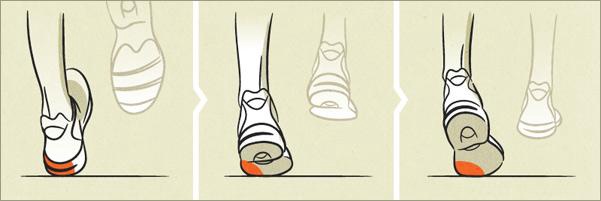
In healthcare settings, your foot structure is often used to determine weight distribution and causes of injury or as an intervention to assist in correcting pain.
Underpronation
Excess supination also termed underpronation, is characterized by having excess wearing on the outer soles of your shoes, high arches, and limited flexibility of the foot. This foot structure places a higher demand on other areas of the body for continuous balance and stability.
Excess strain on other areas of your body can lead to ankle injuries, back, hip, or knee pain, plantar fasciitis, iliotibial band syndrome, and Achilles tendonitis.
✓ Causes
The cause of underpronation is mainly genetic. Meaning it has been passed down from your parents and their parents. And so on.
It could also be caused by wearing shoes that do not provide good support to your feet, an injury, or imbalance of the alignment of your body.
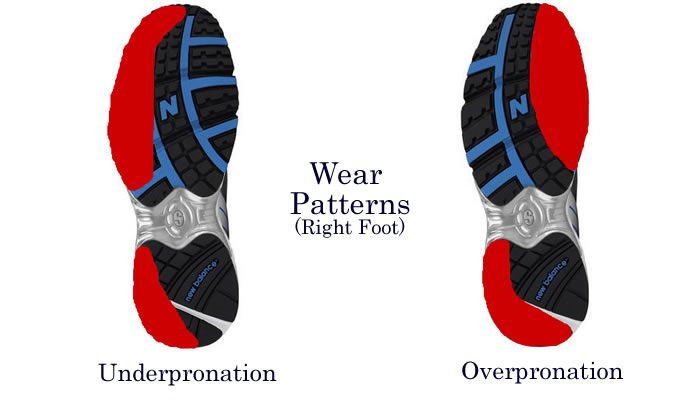
Ligaments, tendons, and muscles hold our body’s posture in its correct form. So, any kink, pain, or shift in this form can lead to a different stance and put unneeded strain on your feet.
✓ Treatment
The following treatments may be helpful:
- Get fitted for a good pair of running shoes
- Gait analysis
- Physical therapy
- Stretching
- Strengthening exercises for your feet and ankles
- Rest and ice the area
- Steroid injections
- Over the counter medications (Acetaminophen, Ibuprofen, Naproxen)
The treatment you need for underpronation prior to running, training, or after injury or pain is all dependent on the severity of your condition.
Please consult your Physician or Primary Care Provider (PCP) if your pain persists or gets worse and stop exercising if you experience any pain.
Running with Pronations
Studies have shown that with abnormal pronation, the joint’s ability to rotate and the force that is put on that joint is altered after running. While in the standing position, the impact of shock is decreased in the foot and absorbed by the arch. But, when the foot is underpronated, shock is not absorbed efficiently due to the decrease of the foot’s flexibility. This results in high arch runners suffering from ankle injuries more often than other foot pronations.
Sometimes, as runners, we can train ourselves to take on a more efficient and safer run style and foot strike. This could help aid in alleviating pain or preventing injury.

I had a conversation with my father, who is an avid runner, about a runner’s form and foot strike. It is his opinion that to change your running form you have to make a conscious effort every time you run. He strives to run with a relaxed form and strikes the ground with the pad of his foot. He also tries to keep a cadence of about 180 steps per minute. This for me is kind of fast considering my cadence is around 160 steps per minute (T. Burch, personal communication, March 16, 2021).
In the 11 years that he has been running competitively and recreationally, he has been able to master his running form and successfully recover from an ankle injury that occurred from doing Tae Chi without skipping a beat.
Prevention
I am a true advocate for preventing injury. Injury may cause you to have weakness in your joints (tendons and ligaments), which can result in limited range of motion and flexibility. So, injury prevention is #goals!
To prevent injury, issues that may result in underpronation, and complications associated with underpronation, the following may be helpful:
✓ Be sure to wear proper shoes
✓ Remember to stretch before and after workouts
✓ Get yourself a massage
✓ Rest in between workouts
✓ Diversify your workouts
In my opinion, working out should feel good, aside from what I call the “feel-good burn.” So, listen to your body.
If you have underpronated feet, consult your Physician or PCP prior to starting a high-impact exercise. They may be able to refer you to a specialist or prescribe orthotics that will help to decrease injury. But, remember to get shoes that are comfortable to wear with orthotic inserts. You do not want to create additional issues and cause pain and numbing of your feet due to your shoes fitting too tight.
All of this information is only suggestive and should not be used as a diagnosis. No information in this article should replace or supersede your Physician or PCP recommendations.
Sources
- , Understanding Foot Supination, Health Website
- , Effects of Pronated and Supinated Foot Postures on Static and Dynamic Postural Stability, Journal
- , What’s the Difference Between Supination and Pronation?, Health Website
- , Running, Health Website





